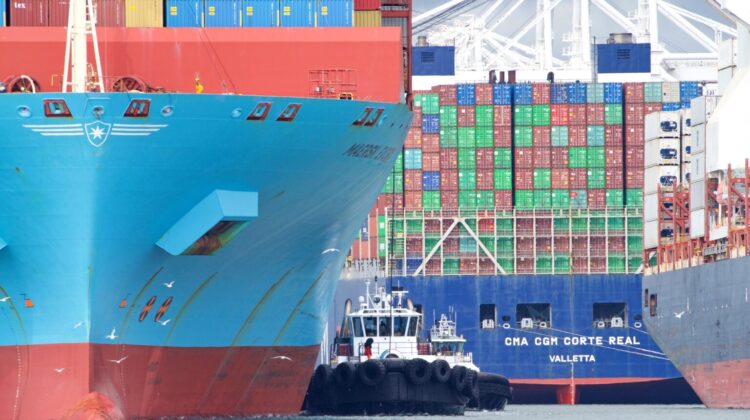
Flexport: Trans-Pacific deteriorating, brace for shipping ‘tsunami’
US importers face even more extreme delays ahead as container capacity maxes out
LOS ANGELES : The number of container ships stuck at anchor off Los Angeles and Long Beach is down to around 20 per day, from 30 a few months ago. Does this mean the capacity crunch in the trans-Pacific market is finally easing? Absolutely not, warned Nerijus Poskus, vice president of global ocean at freight forwarder Flexport. “It’s not getting better. It’s getting worse,” he told American Shipper in an interview on Monday.
“What I’m seeing is unprecedented. We are seeing a tsunami of freight,” he reported.
“For the month of May, everything on the trans-Pacific is basically sold out. We had one client who needed something loaded in May that was extremely urgent and who was ready to pay $15,000 per container. I couldn’t get it loaded — and we are a growing company that ships a lot of TEUs [twenty-foot equivalent units]. Price doesn’t always even matter anymore.”
Restocking driving volumes higher
Poskus said that trans-Pacific import volumes are still rising. He noted that January trans-Pacific imports were up 10% versus 2019 (comparisons to 2020 numbers are skewed by COVID) and 13.5% in February, then jumped 51% in March. “So, we’re now at 1.5 times pre-pandemic levels.”
With imports far outpacing retail sales growth, he attributed volumes to inventory restocking. “The restocking is actually affecting the trade even more than growth in demand. That tells me that this will last even longer. Let’s say U.S. consumer demand slows down in Q3 and Q4. That’s not expected, but even if it does, [capacity availability and rates] shouldn’t improve quickly, simply because of the huge restocking demand.”
Poskus also believes there is a growing export backlog piling up each day in Asia, awaiting available ship slots. If that backlog grows too big, he said, “I honestly don’t know what’s going to happen.”
As a result of the backlog and restocking demand, he thinks “prices will remain high and shipping will probably remain difficult for the rest of this year. And then after that, you have the peak for Chinese New Year in 2022.”
About to get even worse
He said that the situation today is the worst he’s witnessed — and he believes it’s about to get even more severe.
“Buckle up. The month of May will be the worst people have ever seen,” he predicted. Because some shippers will have to wait in line behind the growing backlog in Asia, he expects “what’s going to happen soon is that some importers won’t even be able to get on the boat. For them, it will almost feel like trade is coming to a halt.”
Poskus’ comments mirror cargo bookings data. FreightWaves’ SONAR platform features a proprietary index of shippers’ ocean bookings (SONAR: IOTI.USA). Bookings to the U.S. are measured in TEUs on a 10-day-moving-average basis as of the scheduled date of overseas departure. As of Monday, the index was at a new all-time high and forward bookings data showed a continued rise ahead.
Source : American Shipper
